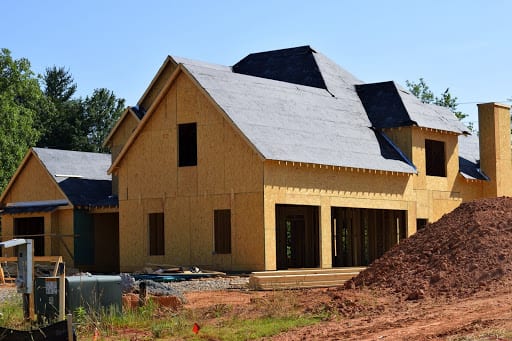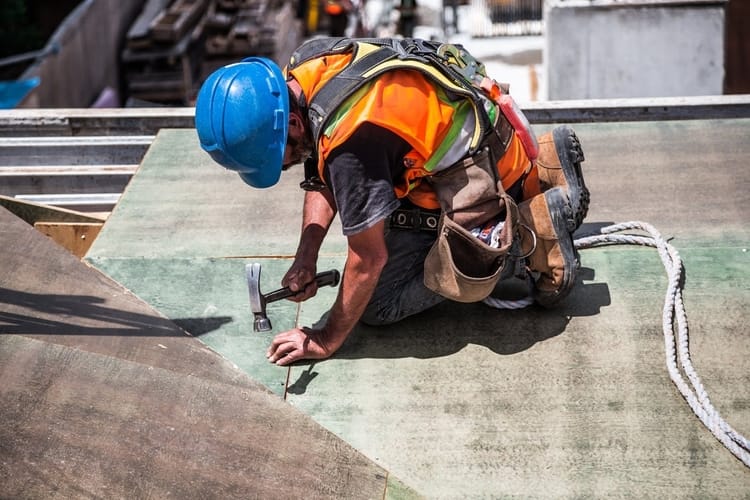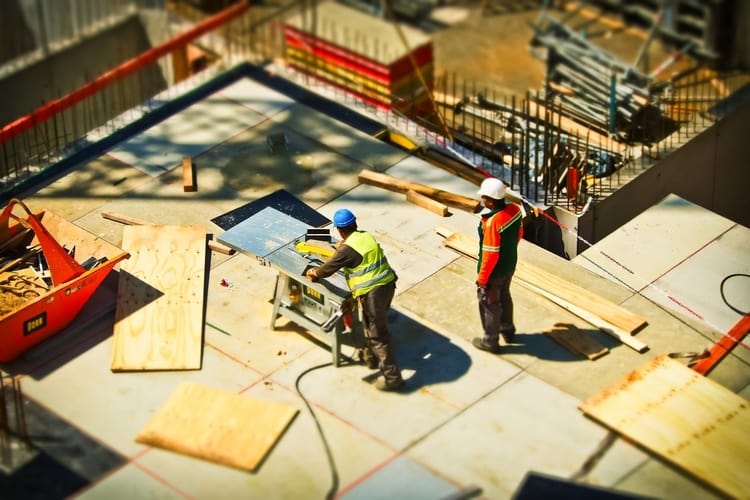What is modular construction and is it the future of the construction industry?

The construction industry is under repair, and it is changing drastically. With the influx in housing demands continuous, the construction industry is facing some huge hurdles. With one of the biggest challenges that the once efficient method of building, is no longer going to work.

construction industry
Due to this change in trend, construction methods require a much-needed upgrade. The change in the way homes are going to be built has caused a turning point in the industry. Companies are finding it much harder to recruit members that are fully qualified, have the right skills and the experience needed, to turn the modern method of building, into the new wave of construction.
Construction companies have decided to name this new time-efficient, upgraded method, as ‘Modular Construction’.
What Is Modular Construction?
Modular construction is the process of building the components that will make up a building, off-site, in a factory. The modular parts are then transported to the site, where they will be connected together and make up each section of a building, abolishing the need of any time, snatching, bricklaying and digging.
Modular construction was first seen the most in the form of bathroom pods, that can be found on almost every building site as well as residential and hospitality events.
Because of the much-preferred method of the developed modular construction, there has quickly been a rise in how much the process has been used and implemented over recent years. The rise has come through volumetric consultation, which incorporates the method of modular as much as it can; craft bedrooms, bathrooms, corridors and in some cases the external finish, outside of the site and in a factory before it is taken and placed together to create a livable, versatile building.
The Types Of Modular Construction
While this new process may seem to be rather one way, there are actually two different types of modular construction, each used to provide different features for the specific needs.
Permanent modular construction:

future of the construction industry
As it says in the name, this form of modular construction is done to be fixed. The way in which this is built is done to ensure it is durable, safe and can stay within a particular place until it is wanted to be knocked down.
The innovative, sustainable method is made with pre-fabricated materials to provide stand-alone buildings or provide as a solution for homes, flats and other integral buildings.
Relocatable Buildings:
This is a building completed on a level that can be used for a temporary amount of time safely, complying with all regulations and application required to be labeled as a usable building, but one that can be flat packed down and moved to a new location after a period of time.
Buildings such as schools, medical clinics and construction site offices will be built in this way to provide fast action, easily accessible buildings in place to the specific needs of the time. Then, once these needs have been addressed, the building will be broken down and relocated.
The UK Brick Shortage
One crucial problem that is currently being faced by the construction industry, is the recent brick shortages. The problem is only getting worse, with current research showing that there are construction companies having to wait over a year on average, just for their delivery of bricks. This is killing potential client deals and projects that can be collected over time by construction businesses, causing many to lose so much money.
It has been revealed by the Federation of Master Builders that bricks have both the longest wait time, and rake up the highest prices, that have recently increased by 9%, due to the raw materials used to make each individual one.
The deficit rose from the previous 2008 recession when money was short, and the housing market faced a significant decline. Because of this, the brick companies were hit the worst, where they then became bankrupt. To try and stay afloat, the brick industry had to make developments much more expensive, for it to be worth both time and money.

Modular Construction
Due to this issue currently being faced, the modular method of construction is making the building still be available, instead of having to wait the longest periods of time for bricks and materials, projects can still take place.
Eco-Friendly Materials
The use of modular buildings are extremely friendly to the environment. Through their extensive use of recycled materials, it is clear that the modular building industry is running the world of construction.
Due to the process being off-site, the amount of waste produced has taken a huge dive too. There are both less messes, which helps the construction industry become much more efficient with their use of materials . There is no issue when it comes to recycling and ensuring they are doing it correctly, or the harsh label of being an industry that floods landfill with rubbish. Modular constructions rid all of this and keep it within the factory while honing their construction supply chain.
By being in a factory for the vast majority of the building process, lands will be able to stay as clean as possible, with locals remaining more satisfied with the amount of waste created in their neighbourhood. .
Less Site Disruption
When taking on a construction project, many integral materials come from all different areas that can travel from thousands of miles away. Not only does this require a lot of waiting time it also can cause various disruptions through the travel process.
By being made entirely in a factory, takes away both of these issues, cutting down truck traffic significantly and the time it takes to wait for materials and appliances from various construction suppliers.
Not only this, but it also takes away a small fragment of the traditional disruptions that a site will come across, such as delivery noise from trucks, skips and large cranes if this is the case, as well as the other irritants such as waste, pollution and mess.
By constructing modularly, this allows the projects to have a much better atmosphere for productivity that is not ruined by strenuous waiting times or unnecessary distractions such as loud sounds and common interferences.
Labor efficiency
Through implementing the new building process into a factory, it is aiding to maximise the effort going into the labor, by having the opportunity to automate the repetitive jobs that are required on the building site.
Because of this, builders will then have the opportunity and time to take on the smaller, more technical tasks, in a much shorter period than it would usually take if they were having to take on every part of the construction process. As well as this, due to being able to segregate tasks, the businesses can save a huge amount of money. This is because the smaller, preciser tasks, being more technical, come at a higher completion cost. Instead can be completed by builders on site helping to save money that could be implemented into a different part of the project.
Durable Materials
Buildings made through modular construction are done with the best quality, durable material. This helps to ensure that anything built, even though not being done with bricks, is long-lasting, and a safe space to be in.
Not only this, but the choice of materials used are done so to build a more studier and superior building. For example, the internal walls are built to improve the sound production, being built airtight to ensure they are energy-efficient, and also come developed with fireproofing too.
This is much better than the traditional form of building homes, as it should save the owners a substantial amount of money when it comes to heating the home. Due to being made to strict guidelines of being airtight and insulated, those moving in will not have the stress of insuring the house is warm throughout the winter.
Similarly, due to being both energy efficient and fire-proof, newly built homes can be safer for the environment too. There will be no excess amount of wasted energy, or even the unfortunate event of a fire, that can both ruin the lives of many, but also contribute massively to environmental and pollution issues. This new, safer material can not only uphold all conditions, but in the event of a problem, it can hold itself in a way that will not damage the surrounding environment.
Workers Safety
Due to having the ability to place strict working processing in place within a factory, it can also help to improve the health and safety standards of construction workers. From improvement to the way in which construction takes place works likewise with the improvement of safety levels.
In fact, out of the entire construction shift from traditional to modular, the two main advantages that have risen, are suggested to be the improvement of safety and better time efficiency throughout project lengths. By being in the controlled, high-quality environment over that of a large open-spaced site, leads to the automated processes taking on the repetitive tasks. Creating both safer methods to conduct tasks, as well as the demand for high levels of safety in a factory environment.
Solving The Housing Shortage
With the population growing faster than ever, and the housing industry being unable to keep up with demand, modular consumption could be the answer to a number of problems.
Most of the cities up and down the country are being hit the worst, with the housing cries louder than ever, the population just cannot comply with the extortionate prices in comparison to size. With those on the smallest monthly wages finding it the hardest, squeezing the last pennies out each month just to rent out a property, it should be asked, can modular construction really change this?
In fact, it can. With project lengths cut down to as short as 6 months before new homeowners can be moved in. The construction industry has never put up a better fight than right now, increasing the number of homes being built at prices much less frightening.
Customisation Freedom
Due to being made in a factory, the processes and materials from conducting modular construction allows that of a customisable element for better aesthetic innovation.
This separates modular construction from that of the traditional bricklaying, as the designs are usually restricted to how inventive they can be due to restrictions on shape, size, and specific regulations in local areas. However, with the ability to create in any shape or form, modular construction can adapt itself to certain regulations, without risking the size, aesthetic or unique, look many hopes for within a home in modern-day times.
Through modular building, every element can be tailored to exactly what is asked for, meeting budget, design, and user requirements, turning these economically friendly new builds, a much better investment for those purchasing a new home, as well as the construction industry.
This shows that modular buildings open up a much bigger range of opportunity when it comes to what the construction industry can create when building.
Summary
It can easily be argued as to whether the construction industry will take to the new form of modular building, and rid their traditional roots of brick and mortar, the future is currently unknown.
But, with changes happening in order to provide new homes that are not only cheap and efficient but cut down on the amount of damage that is created to the environment., There is no reason as to why modular construction will not be the forefront of all building industries within years to come.
With so many units already being built through modular construction, proving its unique, modern yet classic style is a force to be reckoned with, against the well-known, overpriced bricklaying jobs we see at every new turn.